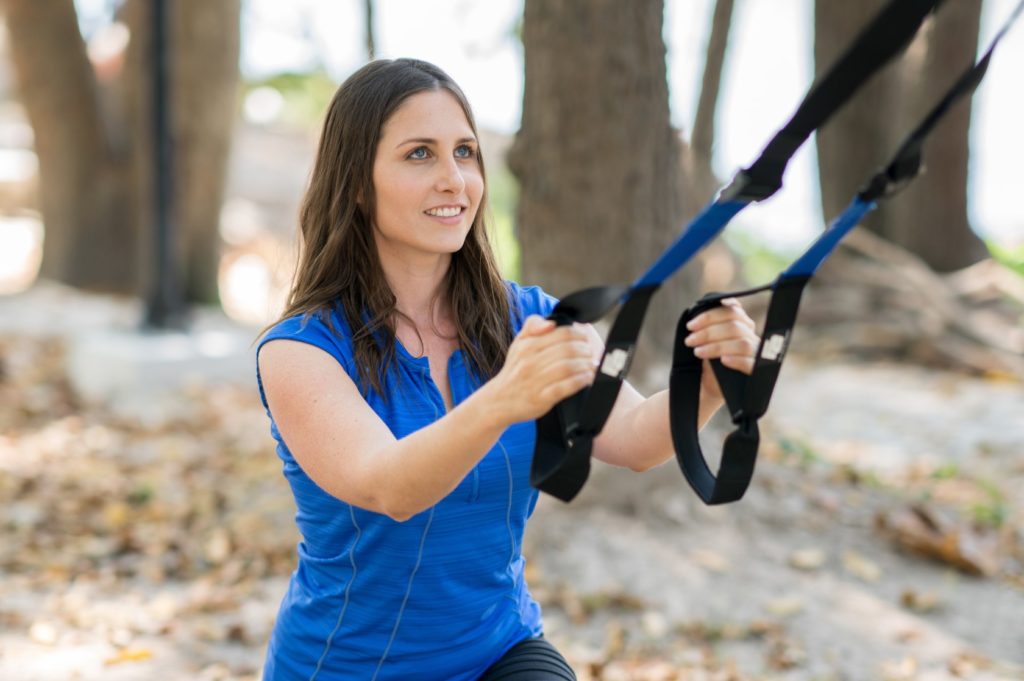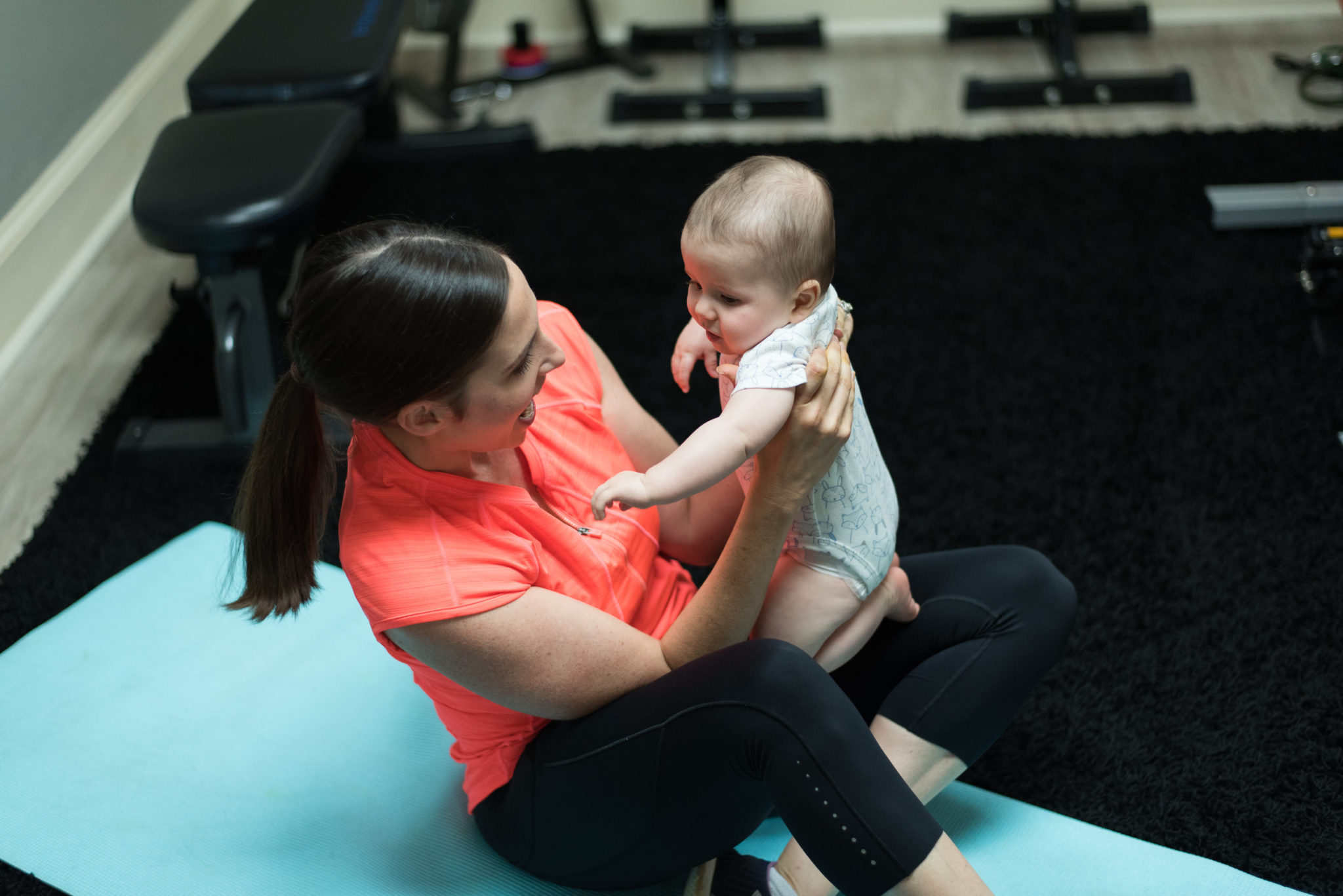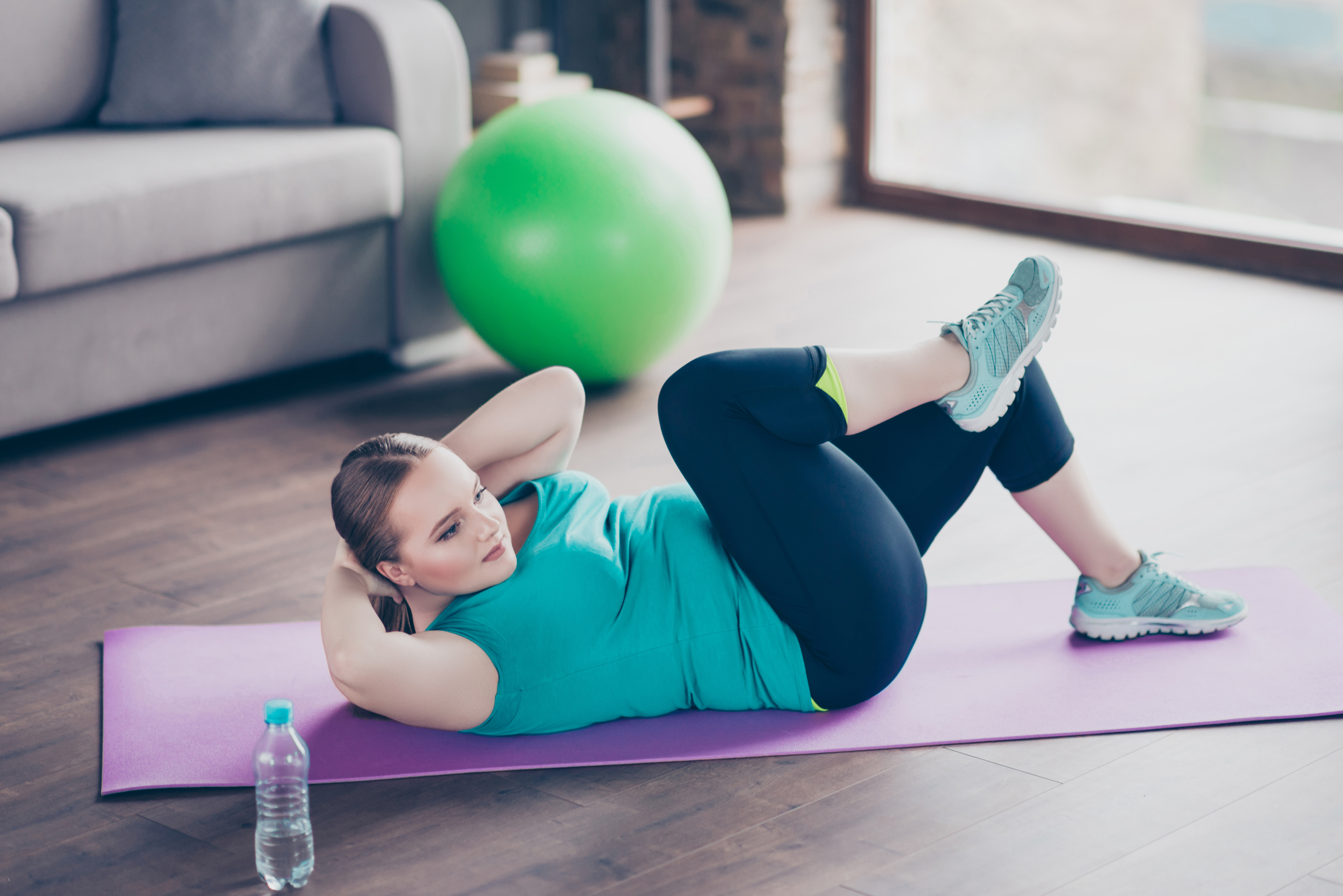Are you ready to take control of your hormone imbalances and PCOS symptoms? This article will help you build a PCOS-friendly routine. Plus, I’ve included a beginner home workout to help you get started.
Creating a long-term PCOS workout plan can be complicated and time-consuming, even with these guidelines. If you want to skip all that planning and start immediately, join The PCOS Fit Studio, my flexible online PCOS workout program that has been helping cysters get fit since 2015.
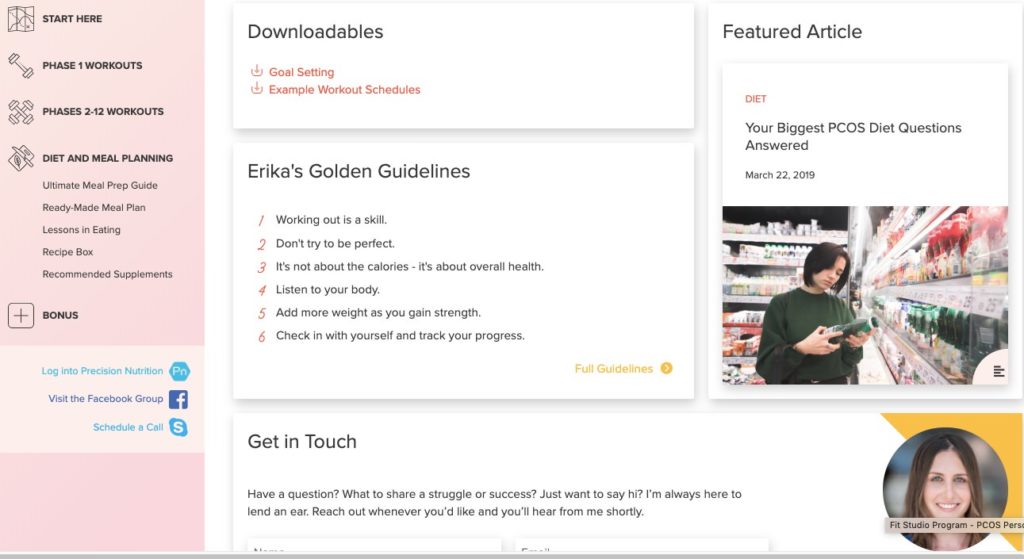
Whether you’re a fitness newbie or a seasoned gym bunny, this program can be tailored for anyone looking to kickstart their journey to a healthier PCOS lifestyle.
Living with PCOS means living with a variety of challenges, from hormonal imbalances to difficulty losing weight. Fortunately, exercise will help tame PCOS symptoms. Committing to a sustainable workout schedule will improve your physical health, boost your mental clarity and energy, and fight cravings.
So, if you’re ready to take the first step towards a healthier you, join us in embracing this PCOS workout plan and start reaping the benefits of a more active and energized lifestyle.
What is the best exercise for PCOS?
There is no single type of exercise that is best for PCOS. One of the best ways to reduce your PCOS symptoms is to choose a form of exercise that you enjoy. Consistency is critical for results, so pick workouts you like well enough to do them!
People with PCOS benefit most from a well-rounded exercise routine that includes resistance training, cardiovascular exercise, and mind-body exercises. Resistance training can include weights, resistance bands, weight machines, or body weight exercises. Cardiovascular exercise can be moderate, like dance workouts, or more vigorous, like high-intensity interval training (HIIT). Mind-body exercises like yoga, Tai Chi, and walking meditation are great for recovery days and stress reduction.
How Women With PCOS Benefit From Regular Workouts
Exercise improves the root causes of PCOS along with reducing PCOS symptoms. Exercise training is truly one of the PCOS treatments available!
- Resistance training- fights polycystic ovary syndrome by improving insulin resistance, reducing androgens, and maintaining a healthy weight. Read more here.
- Cardiovascular exercise- All types of cardio help improve mood, boost energy, and prevent PCOS-related high blood pressure.
- High-Intensity Interval Training- Studies have shown that more intense cardio, like HIIT workouts, are more effective at reducing insulin resistance and belly fat than moderate cardio. Learn more about HIIT for PCOS here.
- Mind-body work: PCOS sufferers should commit to daily physical activity to proactively fight stress. I encourage my clients to do yoga, walking, or chores on days when they are not doing a structured workout like high-intensity interval training or weight training.
How often should you exercise with PCOS?
An exciting new analysis of various medical research has shown that women with PCOS can significantly improve metabolic and hormonal health by engaging in vigorous exercise for just 120 minutes a week. You can break that up into multiple sessions, for example, four 30-minute workouts. The intensity of your workout should feel vigorous to YOU, so if 10 is exercising with maximum effort and 1 is sitting on the couch, aim for a 7-9 out of 10. For beginners, I recommend aiming for a 7 out of 10 on your personal scale. Pay attention to how you feel!
You can split the 120 minutes into a workout plan with cardio and strength training. On your days off from a full workout, I highly recommend doing gentle physical activity like mind-body exercises or household chores. Light physical activity will speed your recovery from your more intense workouts. Below is an example of how you could schedule a week’s worth of physical activity.
Example beginner PCOS Workout Routine
| Monday | Strength Training | 30 Minutes |
| Tuesday | Cardio or HIIT | 20-30 Minutes |
| Wednesday | Hatha Yoga | 20-90 Minutes |
| Thursday | Strength Training | 30 Minutes |
| Friday | Mediative Walking | 20-60 Minutes |
| Saturday | Strength Training | 30 Minutes |
| Sunday | Household chores or yard work | As much as needed 🙂 |
Will working out too much make polycystic ovary syndrome Symptoms worse?
This is a confusing, hot-button topic! I have seen a lot of bad, misleading information about this, especially as it relates to lean PCOS and high cortisol. Overtraining, hypothalamic amenorrhea, and Exercise Nervosa (disordered relationship with exercise) will negatively impact your health. Still, these are specific situations that are relatively easy for the average person to avoid, even if you have polycystic ovary syndrome.
A study conducted by researchers at Rio de Janeiro State University revealed a heightened risk of anovulation (missed periods) in women with PCOS who engage in frequent long-duration exercise sessions (over 60 minutes of moderate to intense exercise). Every person living with PCOS should aim for regular menstrual cycles, regardless of their reproductive goals. So, my guideline for clients is to keep most of your workouts to 60 minutes or less.
It will not negatively affect your PCOS if you only occasionally exceed the 60-minute mark during exercise. Feel free to enjoy extended physical activities like long weekend hikes, bike rides, or dance classes without concerns. Enjoy yourself!
I encourage elite athletes to track their cycles closely and work with their training team to adjust their practice schedules. If you are exercising compulsively, you may have Exercise Nervosa, and you should seek the help of a mental health professional.
Read this blog post for a more detailed discussion of how much you should exercise.
Looking for help with weight management?
For some patients, losing weight can improve PCOS. Exercise will help you shed pounds and prevent type 2 diabetes. However, that is not the #1 reason to exercise if you have PCOS. The benefits of exercise for PCOS (like less hair growth, regular ovulation, and reduced insulin resistance) occur in PCOS patients even if they do not lose weight.
If you have started a PCOS diet to lose weight, it is very important that you strength train as well. When you lose weight, a significant amount (25% or more) of weight loss comes from lean mass, which is mostly muscle tissue. This negatively impacts your strength, appearance and increases fat accumulation in the long run because it slows your metabolic rate.
Your muscles are crucial for combating PCOS. They help you maintain healthy blood sugar levels and hormonal balance. When you lose muscle, your body interprets it as a threat and tries to compensate by making you feel hungrier and slowing down your metabolism to regain lost muscle. This leads to gaining even more fat than before you started dieting. Lifting weights prevents this from happening.
How do you get rid of PCOS belly?
The hormonal imbalances associated with PCOS, such as high cortisol, insulin resistance, and elevated free testosterone, cause the body to store extra fat around the waist. This can be an issue even if you do not need to lose weight. Workouts that exclusively focus on the abs do not do a very good job of addressing the hormonal issues associated with PCOS belly fat. However, the plan I have laid out for you in this article and the complete program that comes with membership to the PCOS Fit Studio will help balance your hormones and burn fat.
Check out this blog post to learn more about polycystic ovary syndrome and belly fat.
What are the worst types of exercise for PCOS?
Despite what some gurus might post on Instagram, there is not a single type of exercise that is bad for PCOS. Running, moderate intensity, and high-intensity training can benefit women with polycystic ovary syndrome. That is not to say that certain types of exercise might be wrong for you. For example, I avoid running. But that is not because I have PCOS. It is because I do not enjoy it, and it irritates my scoliosis.
Find cardio, strength, and mind-body workouts that make you feel good and track your results. Only make changes if something does not seem to be working.
PCOS Workout Plan for Beginners
Instructions
- Do this workout 3 times a week on nonconsecutive days for 4 to 6 weeks.
- To warm up, walk at a brisk pace for 5 minutes.
- The exercises are separated into two groups. Do the two exercises in group A before moving on to group B. Rest as needed between sets.
- The last rep of a set should be tough! If you finish a set and could’ve done more, increase your reps, increase your resistance or select a more difficult version of the movement.
- End the workout with a 5-20 minute cool down walk.This program is designed to get you started quickly. Ideally, you should be ready for a more difficult workout in about 6 weeks.
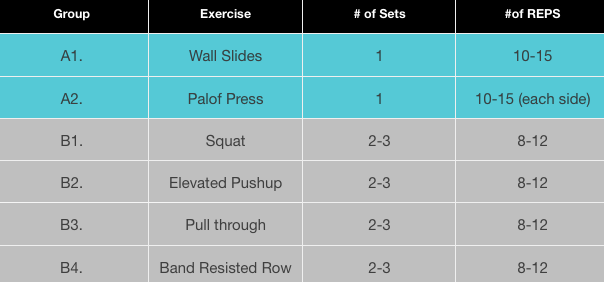
Forearm Wall Slides
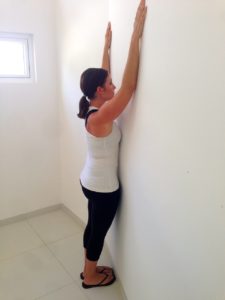
- Start by facing a wall with your forearms in contact with the wall, shoulder-width apart.
- Bend your elbows to 90 degrees and keep wrists in line with the elbows.
- Keep your forearms in contact with the wall as you slide your arms up and out. Don’t shrug the shoulders!
- Slide the arms back to the starting position and repeat.
Palof Press
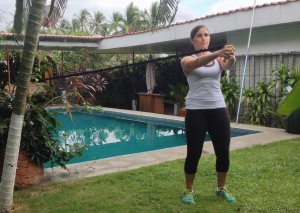
- Attach a resistance band to an immovable object at chest level.
- Stand in line with the band so that your body is parallel to the anchor point.
- Hold the band with both hands and center it on your chest. Do not allow the band to rotate your upper body. Resist the urge to twist at the waist.
- Exhale, push the band straight out in front of you, brace your core and glutes to resist the urge to rotate.
- Hold it in front for 3 seconds, then return the band to your chest.
Squat
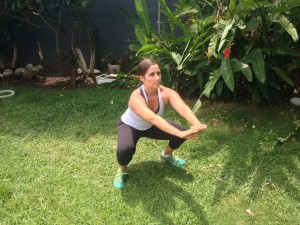
- Stand with your feet beneath your shoulders.
- Inhale and lower your body like you’re sitting down in a chair.
- Keep the back neutral, chest up and core engaged. Push your feet into the ground like you’re trying to split apart the floor beneath you. This will help engage your glutes.
- Lower your body until your thighs are at least parallel to the ground.
- Keep your torso stiff as you exhale and press your body back up to standing.
Note: If you find this move difficult you can start with a chair squat, I offer instructions in this video bonus.
Elevated Push-Up
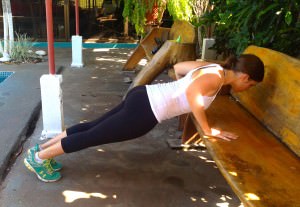
- Place your hands on a wall or another sturdy surface like a table. They should be slightly wider than shoulder-width apart.
- Engage your core to stiffen the torso and step back so that your weight is on the toes and hands. Keep your feet together and your glutes should be firm.
- Inhale and lower your chest toward the wall. Keep the glutes and core shoulder-width, tuck the elbows close to your sides as you descend.
- Exhale, press back up to the starting position.
Pull Through
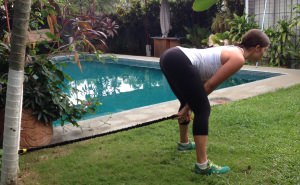
- Loop a resistance band around a sturdy object near the floor. Stand while straddling the band with feet hip-width apart and face away from the anchor point.
- Keep your back straight, core engaged and your shoulders down.
- Inhale as you hinge at the hip and press your rear behind you, slightly bend the knees, feeling a stretch in the hamstrings. Do not round your spine.
- Exhale as you squeeze the glutes and press the hips forward to stand back up, pulling the band through your legs.
- Imagine that you’re pulling from your hips rather than your arms or lower back.
Band Resisted Row
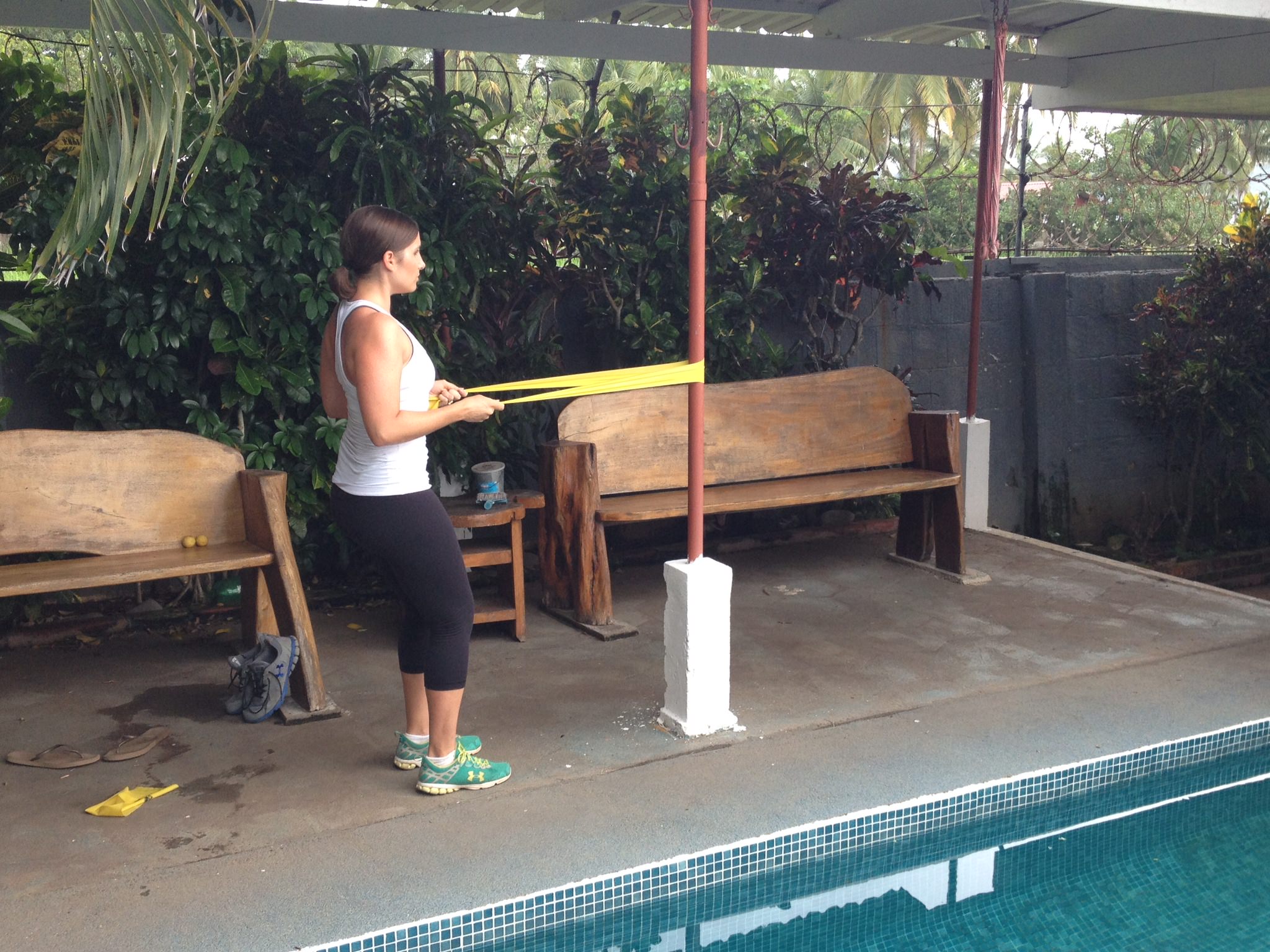
- Find a fixed object where you can wrap the exercise band. Grab an end of the band in each hand and step back to where the band is under tension.
- Stand with your feet apart, shoulder width.
- Exhale, keep your elbows close to your sides as you pull the band towards you.
- Contract and flex your back muscles at the peak position. Inhale as you slowly return to the starting position.
- Repeat for the recommended number of reps.
Are you ready to start strength training?
Get my strength training beginners’ guide, which includes a pre and post workout nutrition guide, plus video instructions for two strength moves that also target your core.
